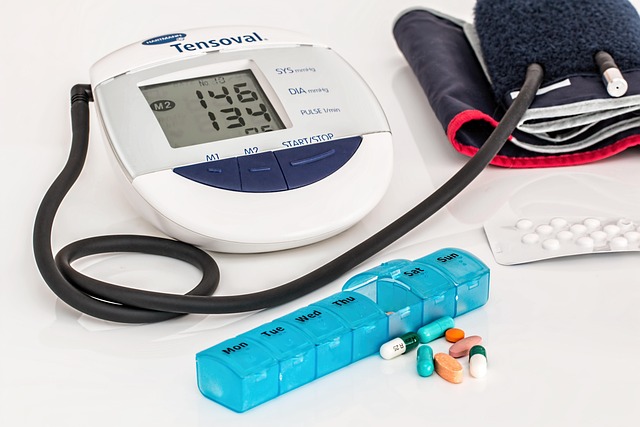Crohn’s Disease Treatment: Exploring Care Options and Early Support
Crohn's disease is a chronic inflammatory bowel disorder that affects the digestive tract lining, causing inflammation that can spread deep into affected tissues. This lifelong condition requires comprehensive management strategies to control symptoms, achieve remission, and improve quality of life. Treatment approaches have evolved significantly in recent decades, offering patients more options for effectively managing their condition and maintaining normal daily activities despite the challenges of living with Crohn's disease.

Goals of Crohn’s Disease Treatment
Treatment for Crohn’s disease focuses on several key objectives that work together to improve patient outcomes. The primary goal is achieving and maintaining remission—periods when symptoms are minimal or absent. Doctors typically aim to reduce inflammation in the digestive tract, which helps heal damaged tissue and prevent complications. Another crucial objective is symptom management, including controlling abdominal pain, diarrhea, and fatigue that can significantly impact daily functioning.
Long-term treatment goals include preventing disease progression and complications such as strictures (narrowing of the bowel), fistulas (abnormal connections between organs), or abscesses. Medical teams also focus on minimizing medication side effects while maintaining effectiveness. Most importantly, treatment aims to improve overall quality of life, allowing patients to participate in normal activities, maintain proper nutrition, and experience psychological well-being despite having a chronic condition.
Recognizing Early Signs of Crohn’s Disease
Early detection of Crohn’s disease can lead to more effective treatment outcomes. Common initial symptoms include persistent diarrhea, often occurring over weeks or months, and abdominal pain and cramping, typically in the lower right abdomen. Unexplained weight loss may occur due to poor nutrient absorption or reduced food intake because of discomfort. Blood in stool, ranging from bright red to dark or tarry, can indicate intestinal inflammation. Fatigue and reduced energy levels are also frequently reported early signs.
Less obvious symptoms might include fever during disease flares, mouth sores, reduced appetite, perianal disease (including fissures or fistulas), and symptoms outside the digestive system like joint pain, skin rashes, or eye inflammation. Children with Crohn’s disease may experience delayed growth or puberty. If these symptoms persist for more than a few days, medical evaluation is recommended, especially if there’s a family history of inflammatory bowel disease, as genetic factors play a significant role in Crohn’s disease development.
Treatment Options Available
Medication forms the cornerstone of Crohn’s disease management. Anti-inflammatory drugs, particularly aminosalicylates and corticosteroids, are often used during flares to quickly reduce inflammation. Immunosuppressants like azathioprine, mercaptopurine, and methotrexate help maintain remission by modulating the immune system’s activity. Biologic therapies, including TNF inhibitors (infliximab, adalimumab), interleukin inhibitors, and integrin receptor antagonists, target specific components of the inflammatory process and have revolutionized treatment for many patients with moderate to severe disease.
When medications cannot adequately control symptoms or complications develop, surgical intervention may become necessary. Common surgical procedures include strictureplasty to widen narrowed bowel sections, bowel resection to remove damaged segments, or procedures to drain abscesses or repair fistulas. Additionally, nutritional therapy plays an important role, particularly enteral nutrition (liquid formulas) which can induce remission, especially in children. Some patients benefit from specific dietary approaches like low-residue or low-FODMAP diets during flares, though evidence varies regarding long-term effectiveness.
Living Well with Crohn’s Disease
Successfully managing Crohn’s disease extends beyond medical treatment to encompass lifestyle modifications that support overall health. Dietary considerations are highly individualized, but many patients benefit from identifying and avoiding trigger foods, staying hydrated, eating smaller, more frequent meals, and working with nutritionists to ensure adequate nutrient intake despite potential absorption issues. Regular physical activity, when tailored to individual capabilities, can help manage stress, improve bone health, and enhance general wellbeing.
Stress management techniques like mindfulness meditation, yoga, or cognitive behavioral therapy may help some patients reduce flare frequency or severity. Building a strong support network, including healthcare providers, family, friends, and support groups, provides crucial emotional backing for coping with a chronic condition. Patient education empowers individuals to recognize early warning signs of flares and take proactive steps in their care. With comprehensive management approaches, many people with Crohn’s disease maintain fulfilling, productive lives despite their diagnosis.
Cost Considerations in the U.S.
The financial burden of Crohn’s disease treatment in the United States can be substantial, with costs varying widely depending on treatment approach, insurance coverage, and disease severity. Medication expenses represent a significant portion of treatment costs, particularly for biologic therapies which may cost between $1,000-$5,000 per dose without insurance coverage.
| Treatment Type | Estimated Annual Cost (USD) | Insurance Coverage Notes |
|---|---|---|
| Aminosalicylates | $1,500-$3,000 | Generally covered with copay |
| Immunomodulators | $700-$5,000 | Usually covered with prior authorization |
| Biologics | $30,000-$80,000 | May require step therapy; copays vary significantly |
| Surgery | $20,000-$60,000 per procedure | Coverage depends on medical necessity |
| Nutritional Therapy | $1,000-$3,000 | Often limited coverage for special formulations |
Prices, rates, or cost estimates mentioned in this article are based on the latest available information but may change over time. Independent research is advised before making financial decisions.
Additional expenses include diagnostic testing (colonoscopies cost $1,500-$3,000), regular monitoring labs ($200-$500 per visit), specialist appointments ($200-$400 per visit), and hospitalization for severe flares ($10,000+ per stay). Patient assistance programs from pharmaceutical companies, nonprofit organizations, and hospital financial aid departments can help offset these costs. Many patients also face indirect costs like lost work productivity, transportation to medical appointments, and special dietary needs.
Living with Crohn’s disease requires a multifaceted approach combining medical intervention, lifestyle management, and attention to psychological wellbeing. While the condition presents significant challenges, advances in treatment options continue to improve outcomes and quality of life for those affected. Working closely with a specialized healthcare team allows for personalized treatment plans that address both the physical and emotional aspects of managing this chronic condition.
This article is for informational purposes only and should not be considered medical advice. Please consult a qualified healthcare professional for personalized guidance and treatment.




